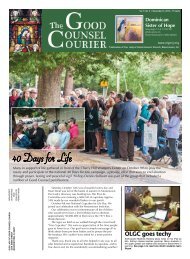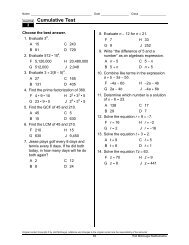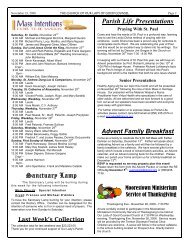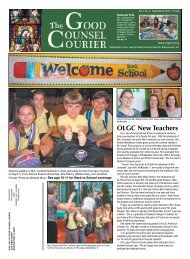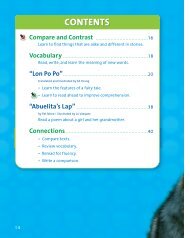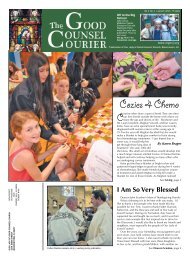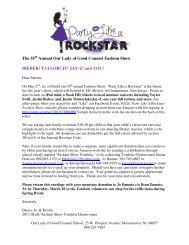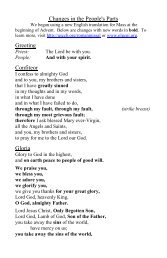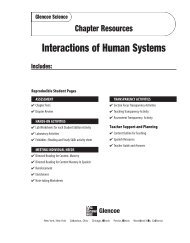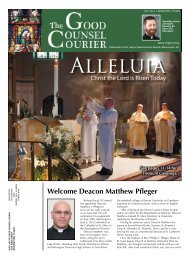Chapter 15 Resource: Support, Movement, and Responses
Chapter 15 Resource: Support, Movement, and Responses
Chapter 15 Resource: Support, Movement, and Responses
- No tags were found...
You also want an ePaper? Increase the reach of your titles
YUMPU automatically turns print PDFs into web optimized ePapers that Google loves.
Name Date Class2Enrichment The Muscular SystemMeeting Individual NeedsMaterialschicken leg <strong>and</strong> thigh, cooked thoroughlysharp kitchen knifeProcedure1. Boil the chicken leg <strong>and</strong> thigh until they arecompletely cooked. WARNING: Alwayswash h<strong>and</strong>s <strong>and</strong> surfaces thoroughly aftercontact with meats.2. Use the knife to cut the skin away. Try not tocut any of the meat. WARNING: Always useextreme care when using sharp instruments.3. Closely examine the bundles of muscleunder the skin. Then examine the ends ofthe muscles at the knee joint.4. Carefully cut away all the flesh fromaround the knee joint. Try to count howmany different bundles there are in thechicken leg.Data <strong>and</strong> Observations1. The word striated means “made up of elongated fibers.” Are the muscles of a chicken’s legKnee jointstriated or smooth?2. How are the muscles of the chicken leg attached to the bone?3. As you cut the muscles away from the joint, how many bundles did you count?Conclude <strong>and</strong> Apply1. The chicken leg is the same as what part of our leg?2. What part of the chicken do we call meat?Copyright © Glencoe/McGraw-Hill, a division of the McGraw-Hill Companies, Inc.32 <strong>Support</strong>, <strong>Movement</strong>, <strong>and</strong> <strong>Responses</strong>



